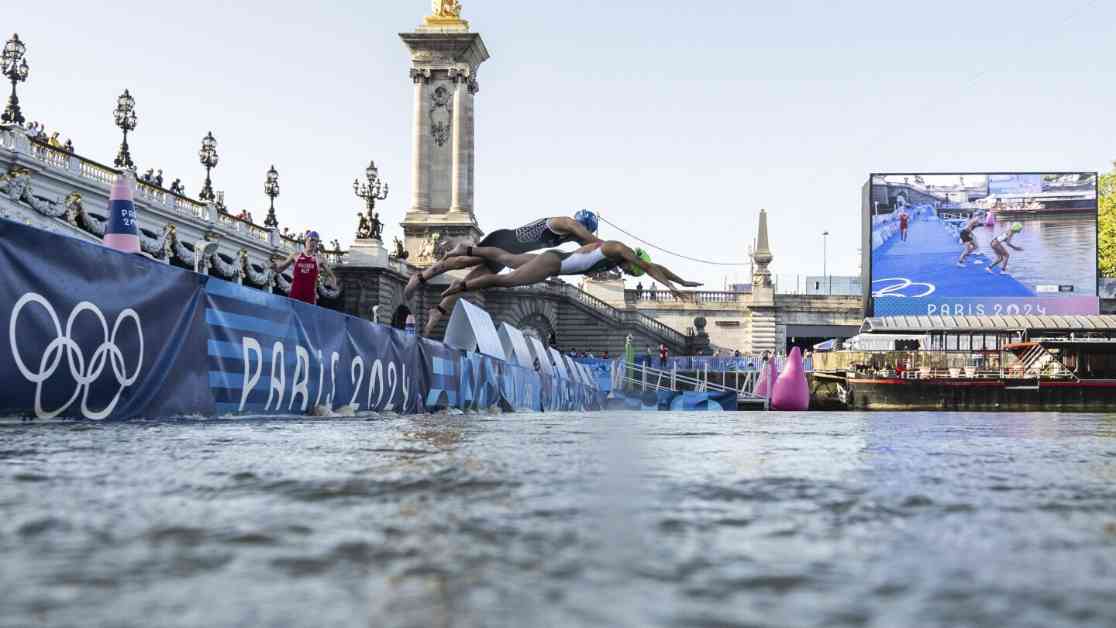The Seine River in Paris played host to a unique competition where marathon swimmers braved the challenges of the historic waterway. Despite concerns about water quality and strong currents, a group of swimmers took to the river for a training session ahead of the women’s 10k marathon race on Thursday and the men’s race on Friday.
Competitors like 2016 Olympic champion Sharon van Rouwendaal from the Netherlands and Irish star Daniel Wiffen embraced the opportunity to swim the 1.67-kilometer course through the heart of Paris. The Eiffel Tower and other iconic landmarks provided a breathtaking backdrop for the event.
While some swimmers, like the American competitors, chose not to submerge themselves fully in the water due to safety concerns, others saw the beauty and uniqueness of racing in the Seine. Austrian swimmer Felix Auboeck expressed his excitement about the picturesque setting and acknowledged the risks associated with open water swimming.
Preparations for the event were not without setbacks, as a test run was canceled earlier due to fluctuating bacteria levels in the river. Despite these challenges, officials were confident that the races could proceed smoothly, with sunny skies and favorable weather conditions expected.
Open water swimming presents its own set of challenges, as athletes are accustomed to training in controlled pool environments. The nature of the sport, which often takes place in lakes, oceans, and rivers, raises concerns about water quality. Hungarian swimmer David Betlehem criticized organizers for pressing ahead with the event despite potential health risks, highlighting the athletes’ lack of choice in the matter.
The Seine River posed a unique venue for the Olympic open water event, being the first time such a competition was held in a river. Previous events took place in lakes, oceans, and other bodies of water around the world. The strong current of the Seine presented a significant challenge for swimmers, especially when swimming against the flow.
Despite the concerns and challenges, athletes were eager to compete in the historic river, appreciating the scenic backdrop and the opportunity to be part of an iconic event. The racecourse, starting and finishing at Pont Alexandre III, offered a six-lap challenge for participants.
While the Seine’s water quality has been a point of contention, Paris has undertaken significant efforts to clean up the river over the years. Infrastructure improvements and environmental initiatives have aimed to make the waterway safer for recreational activities. However, incidents of illness among triathletes after competing in the river highlighted ongoing concerns about water quality and safety.
As the marathon swimmers braved the challenges of the Seine River for the competition, they showcased their endurance and determination in the face of adversity, embracing the historic setting and the opportunity to compete on an international stage.

